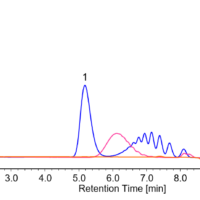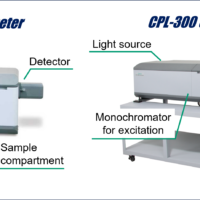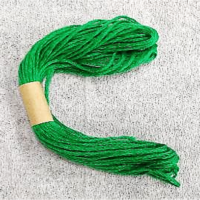Introduction
The Fourier Transform-Infrared Spectrometer (FT-IR) has the ability to measure a wide range of wavelength from the visible to far-infrared (FIR) regions by changing optical elements such as the light source, beam splitter, window, and detector. In addition to the mid-infrared (MIR) region which gives general molecular vibration information, the near-infrared (NIR) region which provides information on overtones and combinations of molecular vibration, and the FIR region which yields information about crystal polymorphs and intermolecular interactions, can be measured by one instrument.
In this poster presentation, the system configuration and features of our newly developed FT-IR for broadband measurement are described.
Furthermore, we display the results of one-shot measurement of water spectra from 6000 to 30 cm-1 (from NIR to FIR) without changing optical elements under vacuum conditions to demonstrate the usefulness of this system and to discuss crystal forms of inorganic materials, which have been difficult to obtain in the past.
Previous Work: Development of Full-Vacuum FT-IR
The ‘full-vacuum FT-IR’ (Fig. 1) was achieved to reduce influence of atmosphere by evacuating whole optical path, and it is more efficient than nitrogen purge method which would have been used.
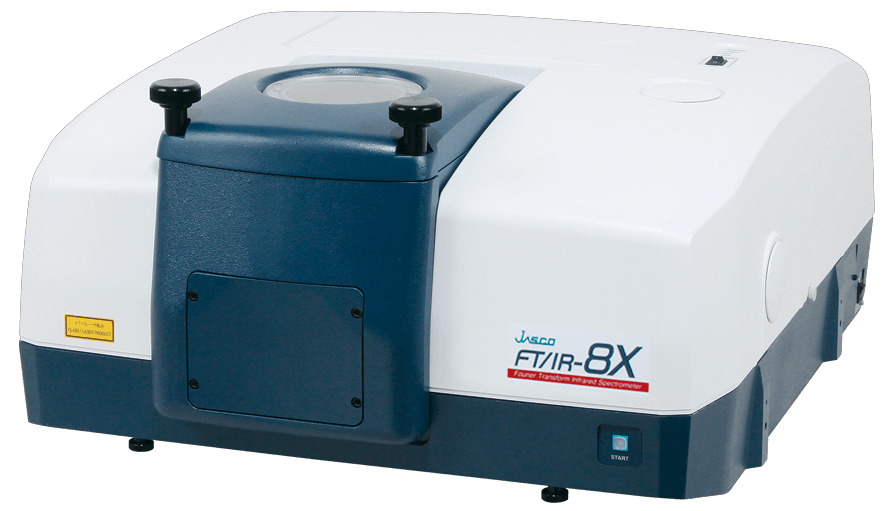
Fig. 1 FT/IR-8X Full-Vacuum FT-IR
Thus, the full-vacuum FT-IR system is quite useful to analyze weak signals such as IRRAS spectrum (Fig. 2) or measure FIR region (Fig. 3) where the influence of vapor is significant.

Fig. 2 Comparison with IRRAS spectra of thin-film under atmosphere and vacuum condition

Fig. 3 Comparison with Single-beam spectra of FIR region under nitrogen purge and vacuum condition
Although the full-vacuum FT-IR system is quite effective in reducing the influence of CO2 and water vapor absorption, changing optical elements such as beam splitter, with breaking vacuum condition, had been required to change measurement wavenumber range.
Current Work: Upgrade of Full-Vacuum FT-IR
To achieve more seamless measurement for wide wavenumber range, we have developed the upgrade system with the automated changing mechanism of the optical elements, which can measure from 25,000 cm-1 to 20 cm-1 under vacuum condition WITHOUT releasing vacuum condition.
In addition, this upgrade full-vacuum FT-IR equips the ‘gate valve’ located between the interferometer and the sample compartment, which can open or insert window. The gate valve will open only during measurement under vacuum condition and will close after measurement. Therefore, we can measure without any window while avoiding to damage all optical elements.
Furthermore, we have recently advanced the beam splitter and detector for broadband measurement (the blue frame in the table below), and achieved to measure 6000 cm-1 through 30 cm-1 without changing any optical elements. (Table 1)
Table 1 Wavenumber Range Table for Various Optical Elements

Through these developments, the system that can measure the wide range of spectrum from NIR to FIR region without complicated operations has been completed.
Application: Wide Range Spectrum from NIR to FIR
Using our new FT-IR, the spectrum of water from 6000 to 30 cm-1 region could be obtained in one shot without changing optical elements. (Fig. 4a)
In NIR region (Fig. 4b), combination mode of OH absorption could be detected. In FIR region, (Fig. 4c) hydrogen bond and libration modes of water could be obtained.
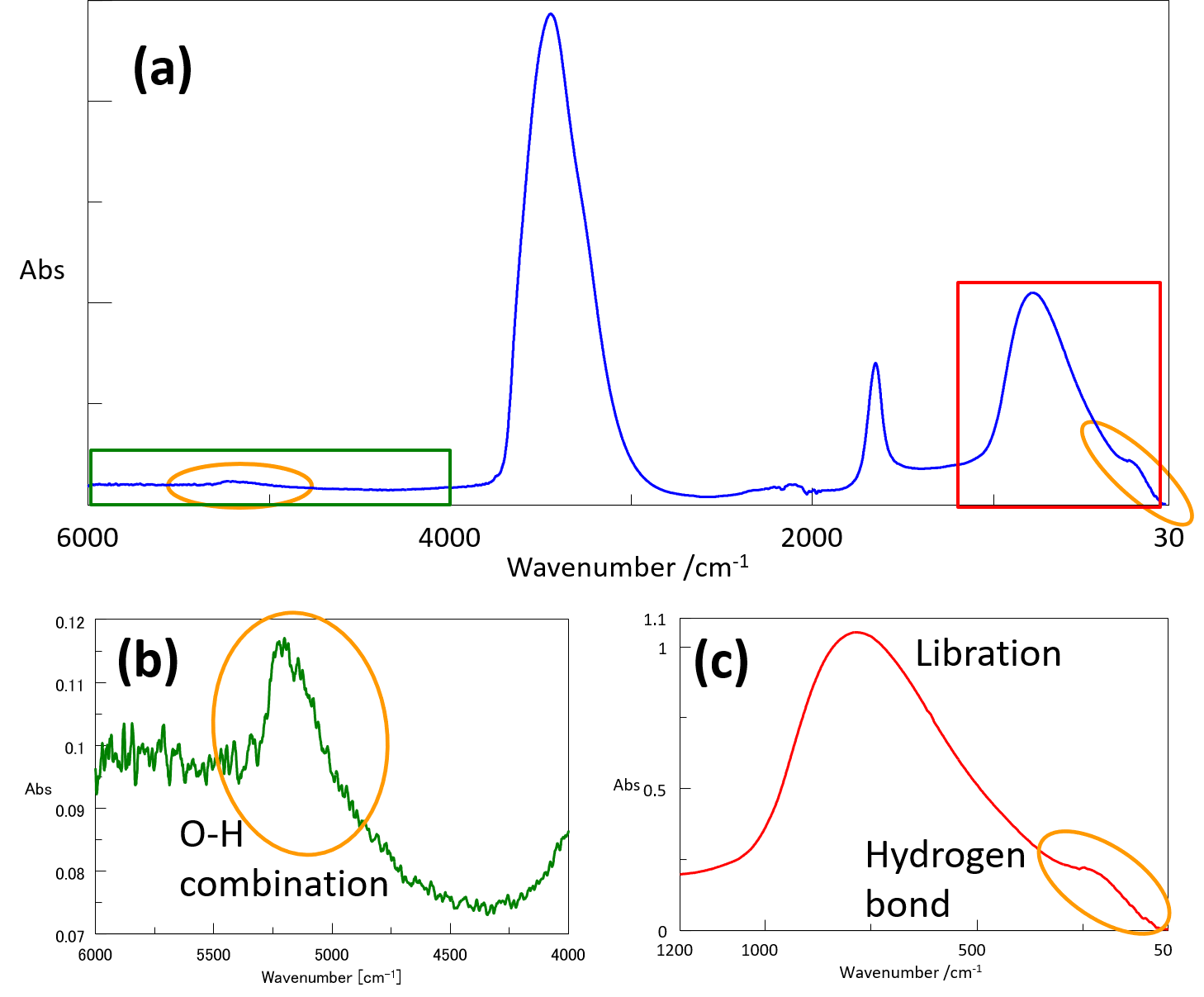
Fig. 4 Water spectra measured through NIR to FIR region without changing optical elements
Application: Discussion of Crystal Polymorphism for Carbonates
In MIR region the spectra of carbonates are characteristic, but similar among different chemical species of carbonates. Therefore, discussion about the crystal polymorphism had not been easy. Using this FT-IR system, the information of not only MIR region but also FIR region can be obtained simultaneously.
The spectra in Fig. 5 revealed that the difference between CaCO3 of calcite and aragonite and suggested that the crystal forms of BaCO3 and SrCO3 are aragonite type in comparison with the spectra of CaCO3. (Fig. 6)

Fig. 5 Comparison of CaCO3 (calcite and aragonite)

Fig. 6 Comparison of various carbonates
Conclusion
- JASCO FT-IR system with new innovation enables to analyze in wide range from NIR to FIR region.
- Using this FT-IR revealed the crystal polymorphism of inorganic compounds and will certainly contribute to unveil unexplained phenomenon such as water behavior.
Tips: Data Processing for ATR Spectra
The ATR method is quite convenient for the IR measurement because pretreatment such as thickness adjustment (which is too hard especially in FIR region). On the other hand, the spectra of the transmission and ATR method are not the same. Therefore, we used to process the ATR spectrum into a transmission-equivalent spectrum by data correction based on the Kramers-Kronig transformation in order to analyze it. (Fig. 7)

Fig. 7 Comparison of the raw ATR, the ‘processed’ ATR and the transmission spectra
References
Poster Session at SciX 2023 conference (October 8-13 in Sparks, Nevada, U.S.A.)
Kohei Tamura1, Ken-ichi Akao1, Yukihiro Ozaki2
1 JASCO Corporation., 2967-5 Ishikawa-machi, Hachioji, Tokyo, 192-8537, Japan,
2 School of Biological and Environmental Sciences, Kwansei Gakuin University, 1 Gakuen Uegahara, Sanda, Hyogo 669-1330, Japan.



